Gallup New Mexico: The Indian Capital, designed by Santa Fe artist L.H. Ewing around 1947, represents a vivid pictorial representation of the Gallup area, replete with detailed indigenous iconography. This artwork, commissioned by the Gallup Chamber of Commerce, serves as both an aesthetic creation and an informative guide, drawing a rich tapestry of the region's Native American history and the natural landmarks scattered across the Southwest.
The late 1940s was a time when the history and culture of Indigenous communities in the Southwest were being recognized and celebrated. Gallup, New Mexico, historically a product of 19th-century westward expansion, had evolved to become a vibrant confluence of indigenous cultures and American frontier spirit. Within this context, Ewing’s map manages to reflect the region’s profound historical depth and its contemporary identity. By pinpointing archaeological sites and natural attractions, the map forms a nexus of historical insight, offering glimpses into civilizations and stories long past.
One of the most notable features is the detailing of Mesa Verde National Park, located around 165 miles from Gallup. With its prehistoric ruins, cliff dwellings, and a rich chronicle stretching from the era of the Basketmakers to the Pueblo builders, Mesa Verde epitomizes the cultural wealth of the Southwest. Similarly, the Inscription Rock at El Morro National Monument holds a mosaic of inscriptions from Spanish and American explorers, marking their journeys and explorations. The significance of such sites is emblematic of the map's intent – to shed light on the region's rich tapestry of stories, from the prehistoric to the colonial.
Furthermore, the pictorial representation of Window Rock Navajo Agency, Acoma’s Sky City, and Hopi Indian Villages, among others, paints a vivid picture of Native American life and its intersections with nature. The artistry captures the deep-rooted symbiosis between the region's inhabitants and its landscapes – a relationship that has persisted for centuries and remains visible in contemporary times. This harmonious blend of nature and civilization, reflected in Ewing's design, embodies the essence of the Gallup area.
In essence, L.H. Ewing's Gallup New Mexico: The Indian Capital is not just a map but a chronicle. It narrates the intertwining tales of nature, indigenous culture, and modernity, making it an invaluable artifact for understanding the rich tableau of the American Southwest.











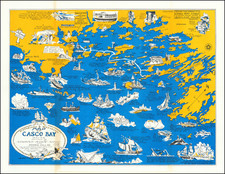
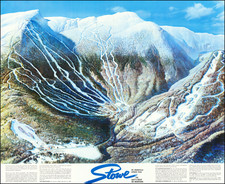
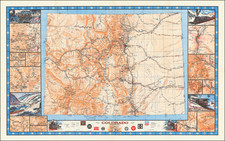
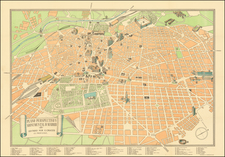
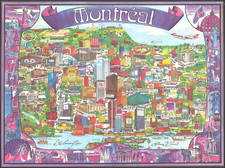
![[ Anchorage in the Future ] Anchorage and the Cook Inlet Basin - Captain Cook Returns 2035 A.D.](https://storage.googleapis.com/raremaps/img/small/78278.jpg)